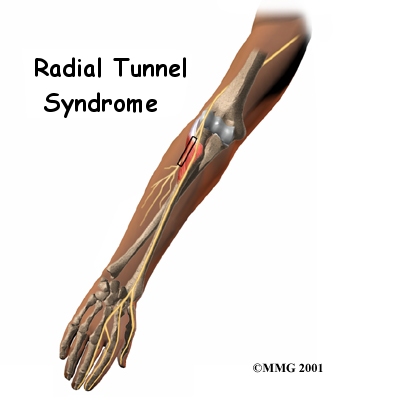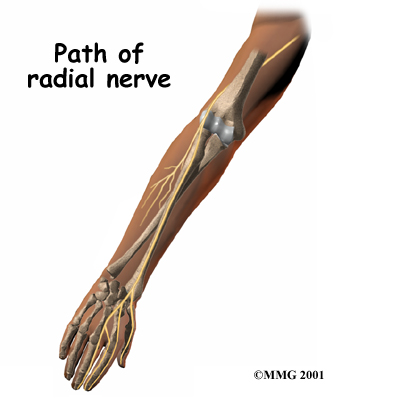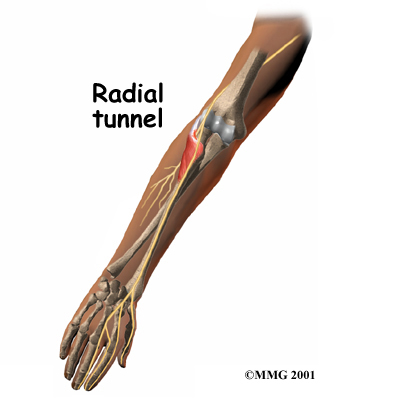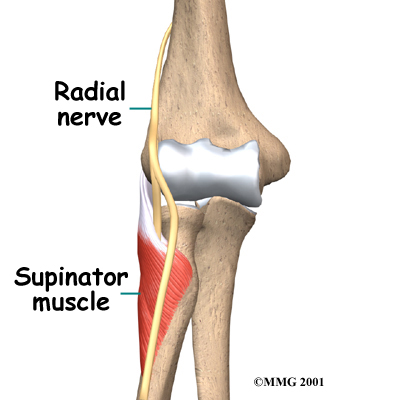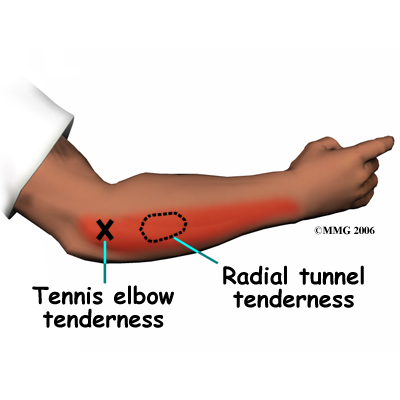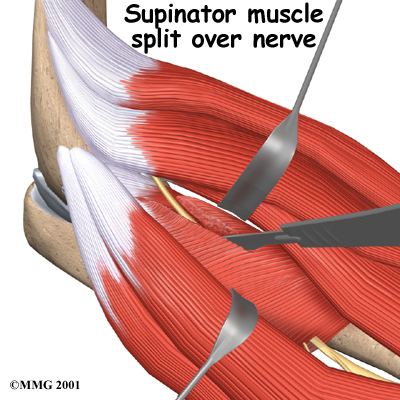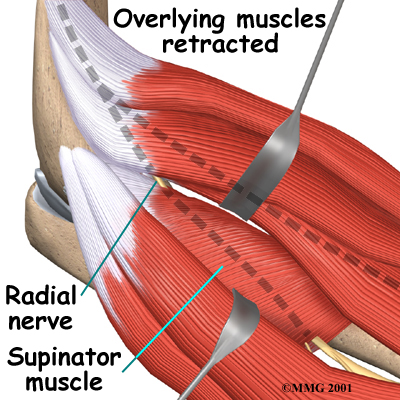How can I make my pain go away?
Treating radial tunnel syndrome can be frustrating, for you and your health care providers. Getting your symptoms under control and helping you regain the use of your elbow can be a challenge.
Non-surgical Rehabilitation
The most important part of your treatment is to avoid the activity that caused the problem in the first place. You need to avoid repetitive activities that require your wrist to be repeatedly bent backwards. Repeated use of the wrist in twisting motions (such as using a screwdriver) also make the problem worse. If your work tasks caused your condition, you should modify your work site or your duties. This is crucial for treatment to be successful. You need to take frequent breaks as you work and play. You also need to limit heavy pushing, pulling, and grasping.
Our physiotherapist will work with you to ease your symptoms and improve elbow function. At first, we will give you tips on how to rest your elbow and how to do your activities without putting extra strain on your elbow. Ice and electrical stimulation may be applied to ease pain.
If symptoms are worse at night, our physiotherapist may recommend that you wear a lightweight plastic arm splint while you sleep. This limits your elbow movements at night and eases further irritation. The splint can help your elbow rest, giving the nerve time to recover from irritation and pressure.
Exercises are used to gradually stretch and strengthen the forearm muscles. Your physiotherapist at Eastwood Physiotherapy may instruct you in special exercises to help the radial nerve glide within the radial tunnel. Treatment eventually progresses to include strengthening exercises that mimic daily and work activities.
Although the time required for recovery varies, if non-surgical treatments are successful, you may see improvement in four to six weeks. You may need to continue wearing your wrist strap during the day and the elbow pad or splint at night to control symptoms. Try to do your activities using healthy body and wrist alignment. Limit activities that require repeated hand and forearm motions, heavy grasping, and twisting motions of the arm and hand.
Post-surgical Rehabilitation
If you have surgery for radial tunnel syndrome, your elbow will be placed in a removable splint and wrapped in a bulky dressing following surgery. Although recovery time varies, you may be required to attend occupational or physiotherapy sessions for six to eight weeks, and you should expect full recovery to take approximately three to four months.
You'll most likely begin your physiotherapy program about a week after surgery, with active forearm range-of-motion exercises. Our physiotherapists also use ice packs, soft-tissue massage, and hands-on stretching to improve range of motion.
When the stitches are removed, you may start carefully strengthening your hand and forearm by squeezing and stretching special putty. We may also recommend the use of isometric exercises to improve forearm and hand strength without straining the tissues near the radial tunnel.
As you progress, our physiotherapist will give you exercises to help strengthen and stabilize the muscles and joints in the wrist, elbow, and shoulder. Other exercises are used to improve fine motor control and dexterity of the hand.
Some of the exercises you'll do are designed get your elbow working in ways that are similar to your work tasks and sport activities. We will help you find ways to do your tasks that don't put too much stress on your elbow. Before your physiotherapy sessions end, our physiotherapist will teach you a number of ways to avoid future problems.
Physician Review
Your doctor may do some tests of the radial nerve. An electromyogram (EMG) tests to see if the muscles of the forearm are working properly. If the test shows a problem with the muscles, it may be caused by a problem with the radial nerve. The nerve conduction velocity (NCV) test measures the speed of an electrical impulse as it travels along the radial nerve. If the speed is too slow, then the nerve is probably pinched.
These tests are not very accurate in diagnosing radial tunnel syndrome. Many people who have radial tunnel syndrome will have normal EMG and NCV test results. Your doctor will consider all parts of the examination in diagnosing whether or not you have a problem with radial tunnel syndrome.
Doctors commonly have their patients with radial tunnel syndrome work with a physiotherapist or occupational therapist.
Eastwood Physiotherapy provides services for physiotherapy in Edmonton.
